- Register
- Log in to Tune-In
- Wishlist (0)
-
Shopping cart
(0)
You have no items in your shopping cart.
Beatles News

Paul McCartney is likely a familiar face on “favorite songwriters” lists everywhere. But, McCartney has a list of his own. Find three of the former Beatle’s favorite songwriters below.
1. Bob Dylan
Bob Dylan and the Beatles are intrinsically linked. Each member of the Fab Four has expressed their love for The Bard and they often ran in the same circles. Naturally, McCartney cites Dylan as one of his favorite songwriters to date.
“I always like what he does,” McCartney once explained. “Sometimes I wish I was a bit more like Bob. He’s legendary… and doesn’t give a shit! I love his singing – he came through the standards albums like a total crooner. But, yeah, I like his new stuff.”
2. Stevie Wonder
McCartney and Stevie Wonder have collaborated a couple of times. Moreover, McCartney has cited Wonder as one of his favorite songwriters. Macca dubbed Wonder with a descriptor we’re sure he’s received a fair few times: “Genius.”
“Stevie came along to the studio in LA and he listened to the track for about ten minutes and he totally got it,” McCartney once said of Wonder on the song &l details

Paul McCartney’s handwritten, work-in-progress manuscript for the cheeky Beatles song “Lovely Rita” will be on view and up for grabs for US$650,000 next month at the Park Avenue Armory in Manhattan.
McCartney’s rough draft of the song, which John Lennon was also credited for, is from the much-acclaimed 1967 album Sgt. Pepper’s Lonely Hearts Club Band. It’s among the treasures for sale at the ABAA New York International Antiquarian Book Fair from April 1-4.
Torn from a spiral notebook, the 7½-by-5-inch lined page with lyrics and edits, “is a cool piece of ephemera,” says Alex Hime, director of Biblioctopus, the Los Angeles-based rare books dealer presenting the item for sale.
“It represents the most important category of popular culture in the second half of the 20th century,” he says, “which is pop music.”
“Lovely Rita” depicts a humorous encounter with a traffic warden. The rough draft reveals the inner workings of an ace songwriter’s mind. “From this working manuscript you get to see the process,” Hime says.
On the page, seven lines in black are McCartney’s first concept, a details
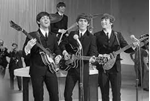
What Janet DiGangi recalls most vividly about the day the Beatles came to town is eating cake and ice-cream with furious impatience. It was 12 September 1964, and DiGangi was 12, living in Boston, Massachusetts, the oldest of seven siblings. The Beatles were about to play Boston Garden but the family couldn’t leave until they’d celebrated her brother Peter’s second birthday with candles and presents.
“I was furious, because I didn’t want to be late,” recalls DiGangi, now 72. She had saved up all her babysitting money to buy the band’s second US album, Meet the Beatles! “I was so excited.” Thankfully, DiGangi made it to the show on time. It was “electric”, and sent fans wild. “It was just an explosion of screaming and hysteria,” she says.
Like many Americans who watched the Beatles arrive in the US – either on 9 February 1964 on their first Ed Sullivan Show, or those who caught their North American tour later that year – the experience for DiGangi fostered a lifelong love and fascination with the band from Liverpool. As she grew up from a schoolgirl to an adolescent to a young woman, she tagged along as the band’s soun details

The online auction of a trove of letters, photos and other items that Pattie Boyd, who was at the heart of the Swinging 60s, concluded Friday – and it’s safe to say that it surpassed all expectations.
Christie’s, the world-renowned auction house, said its online sale of The Pattie Boyd Collection sold for around $3.6 million, or more than seven times the pre-sale high estimate of around 380,000 pounds.
The collection, which went on public display at Christie’s London headquarters last Friday, provided a glimpse into the heart of the 1960s and 70s counterculture.
The 111 lots up for sale included affectionate letters from both her iconic rock icon husbands George Harrison and Eric Clapton, alongside clothing, jewelry, drawings and photographs – some of Boyd, and some by her.
“I am completely blown away by the enthusiasm of international bidders for these special treasures that I have always loved,” Boyd said. “I am so happy that new hearts will now enjoy them, as they enter into their next ‘chapters.’ I am lucky that my life today continues to bring me joy and different adventures – I would encourage people to follow their passions details

In 1963, John Lennon cracked jokes onstage when The Beatles performed in the Royal Variety Performance. The band nervously took the stage and played for their large, wealthy audience. According to Lennon, they received multiple other requests to play the same show over the years. He shared why they turned all of them down.
John Lennon said The Beatles often turned down requests to play for the royal family
After several years of working together, The Beatles’ popularity took off in 1963. Their fanbase was growing exponentially and, soon, they were performing for the Queen Mother.
“The fame really started from when we played the Palladium,” Paul McCartney said in The Beatles Anthology. “Then we were asked to do the Royal Command Performance and we met the Queen Mother, and she was clapping.”
The Beatles and the Queen Mother | George Freston/Fox Photos/Getty Images
Lennon said that in the years after their performance,...
Source: imdb.com
details
On March 21, 1964, The Beatles scored their second consecutive No. 1 single on the Billboard Hot 100 with “She Loves You.” The pop-rock classic with the infectious “yeah, yeah, yeah” chorus replaced the Fab Four’s breakthrough hit, “I Want to Hold Your Hand,” which had spent seven straight weeks at the top of the chart.
“She Loves You” held the No. 1 spot on the Hot 100 for two weeks, and then was replaced by yet another Beatles tune, “Can’t Buy Me Love,” which topped the chart for five straight weeks.
Co-written by Paul McCartney and John Lennon, “She Loves You” was already huge hit in the U.K. long before its success on this side of the pond. Released on August 23, 1963, in the U.K., the song spent six non-consecutive weeks at No. 1 there between September and early December. “She Loves You” was the best-selling single in the U.K. for 1963, and remains The Beatles’ most successful single in their home country.
The song actually was first released as a single in the U.S. on September 16, 1963, on Swan Records. This was a couple months before the Fab Four signed a stateside deal with the Capitol label. details

"It's the best one, innit?" McCartney said Lennon told him of lyrics he considered changing in the 1968 hit song
Paul McCartney is opening up about how he and John Lennon took a sad song and made it better.
On Wednesday's episode of The Beatles member's podcast from iHeartPodcasts and Pushkin, Paul McCartney: A Life in Lyrics, the music legend, 81, spoke about crafting the 1968 classic "Hey Jude." In addition to reflecting on how the song was inspired by his close relationship with Lennon's first-born son Julian and the time his bandmate left his first wife, Cynthia, and son to pursue a relationship with Yoko Ono, he shared that Lennon inspired him to keep a lyric he considered changing.
"'The movement you need is on your shoulder.' Now, I thought that was just me blocking in," McCartney admitted on the podcast.
The rock star revealed that the late icon convinced him not to alter a line in the song when he played it for him and Ono, 91, for the first time.
Source: Sadie Bell/ca.news.yahoo.com
details
As The Beatles burst out the door on the fire escape and Ringo Starr yells, “We’re out,” it’s a moment of freedom as they descend the stairs in their 1964 film, A Hard Day’s Night. John Lennon, Paul McCartney, George Harrison, and Starr are celebrating the fact they are breaking out of a television studio and avoiding throngs of screaming fans as they frolic on a field. The song accompanying the romp is “Can’t Buy Me Love.”
The scene utilized a bit of “movie magic, ” comprising three different locations. The fire escape was on the back of the legendary Hammersmith Odeon in London, and the band hurried onto a field at Gatwick Airport, while the scene was matched up with more footage filmed on the Thornbury Road Playing Fields. Lennon had to miss some filming as he was honored at a literary luncheon celebrating the success of his book, In His Own Write. Director Richard Lester filled in for the missing Beatle.
Source: Jay McDowell/americansongwriter.com
details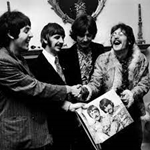
It Was Fifty Years Ago Today! The Beatles: Sgt. Pepper & Beyond is a 2017 documentary film directed by Alan G. Parker. It explores the creation of the Beatles’ album Sgt. Pepper’s Lonely Hearts Club Band. The film features interviews with musicians, family members, and journalists.
Here’s how you can watch and stream It Was Fifty Years Ago Today! The Beatles: Sgt. Pepper & Beyond via streaming services such as Peacock.
Yes, It Was Fifty Years Ago Today! The Beatles: Sgt. Pepper & Beyond is available to watch via streaming on Peacock.
It is a documentary that goes into detail about the making of the Beatles’ famous album “Sgt. Pepper’s Lonely Hearts Club Band.” The film looks at the creative process behind the album and how it came into existence. It also looks into the impact the album created on the music world and the culture of the 1960s.
The documentary is full of interviews with people who were there at the time of the creation of this album, including Paul McCartney and Ringo Starr themselves. It also includes other musicians and those close to the Beatles.
Source: Elton Fernandes/yahoo.com
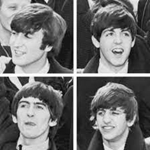
English musician, singer, songwriter, and composer Paul McCartney records the Lennon-McCartney ... [+] composition 'Thingumybob' with the Black Dyke Mills Band in Saltaire, City of Bradford, West Yorkshire, 30th June 1968.
Paul McCartney is in the middle of sharing some incredible insights and backstories behind some of the biggest songs of his career. The singer-songwriter is deep into season two of his podcast Paul McCartney: A Life in Lyrics (via iHeartPodcasts and Pushkin), which sees the rocker and his friend Paul Muldoon digging into how some of his greatest works were created and what they mean. In the latest episode, he opened up about “Hey Jude,” which is both an uplifting and very sad tune.
The former Beatle stated that he once drove to see Julian Lennon, son of his bandmate John, and the boy’s mother, Cynthia. During the 45-minute trip, he began writing the song that would be “Hey Jude” for the boy, as John Lennon had just left the family.
McCartney detailed how the words came together in a seemingly very simple fashion, stating, “In my mind… ‘Hey, Jules, don't make it bad. I know this is tough for you, but take a sad song and make it better. Y details
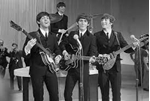
What Janet DiGangi recalls most vividly about the day the Beatles came to town is eating cake and ice-cream with furious impatience. It was 12 September 1964, and DiGangi was 12, living in Boston, Massachusetts, the oldest of seven siblings. The Beatles were about to play Boston Garden but the family couldn’t leave until they’d celebrated her brother Peter’s second birthday with candles and presents.
“I was furious, because I didn’t want to be late,” recalls DiGangi, now 72. She had saved up all her babysitting money to buy the band’s second US album, Meet the Beatles! “I was so excited.” Thankfully, DiGangi made it to the show on time. It was “electric”, and sent fans wild. “It was just an explosion of screaming and hysteria,” she says.
Like many Americans who watched the Beatles arrive in the US – either on 9 February 1964 on their first Ed Sullivan Show, or those who caught their North American tour later that year – the experience for DiGangi fostered a lifelong love and fascination with the band from Liverpool. As she grew up from a schoolgirl to an adolescent to a young woman, she tagged along as the band’s soun details

There’s no question that the overall success of the Beatles was made possible through the contributions of Sir George Martin. He was responsible for many of the musical and technical innovations that appeared on their 12 studio albums recorded between 1962 and 1970. He is often referred to as “The Fifth Beatle” because of his importance to the group. Recently, David Bennett reviewed George Martin’s contributions in detail, specifically the parts where his performances appear on the recordings.
In various interviews, Martin stated that he initially wasn’t impressed with very early Beatles recordings, but appreciated the band’s dry wit (especially George Harrison’s), and – based on that – agreed to sign them. He worked closely on their first releases, specifically “Love Me Do”, “P.S. I Love You”, and “Please Please Me”, often providing polish or music arrangement sensibility. The latter song went on to reach #1.
Though his contributions initially involved listening and brainstorming suggestions for songs by Lennon and McCartney, he began contributing actual musical parts to some performances. In many cases, he wrote, arranged details
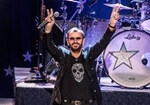
Ringo Starr is already one of the most successful musicians of all time in the U.K., but that track record doesn’t mean he’s done creating. The drummer, singer, and songwriter has a new tune out with a bevy of other superstars, and it could hit No. 1 in the U.K., giving him another winner…at least, in some regards.
The former Beatle is one of the many members of the rock supergroup Mark Knopfler's Guitar Heroes, which was put together by the Dire Straits frontman and solo star whose name fronts the band. The rocker gathered together many of his famous friends to re-record a new version of the song “Going Home (Theme From Local Hero),” which is currently making a play for the No. 1 spot on the U.K. singles chart, according to the Official Charts Company.
“Going Home (Theme From Local Hero)” is a new superstar collaboration that’s aimed at raising funds for a worthy cause. All proceeds from the tune will go toward supporting both Teenage Cancer Trust UK and Teen Cancer America. The mix of celebrity names and the charitable aspect mean the track has a lot going for it, and it could debut at No. 1 in the U.K.
Mark Knopfler's Guitar Heroes counts more than 50 m details

This week’s podcast episode of A Life in Lyrics features Sir Paul McCartney reflecting on one of his best-loved Beatles tracks, Hey Jude.
Macca admitted he likes it when fans mishear his lyrics, saying: “I like my songs to be [for] every man or every woman, because I know people are going to listen to them.
“And I like the fact that they put their own interpretations on them and I'm always glad when the lyrics get a bit screwed up and when they mishear them, because it's yours now.
“I’ve let it go, and so now you should make of it what you will.” The recording of Hey Jude famously features accidental swearing if you listen carefully.
Podcast host Paul Muldoon said: “[McCartney] had accidentally begun the song while Ringo was out of the room but Ringo managed to return from the toilet at just the right moment, hitting his drum entrance perfectly.
“It was the most spirited take, though not without mistakes. If you listen really carefully, you may hear one of the band members swearing. When Paul flubs the piano part, remember.”
The 81-year-old Beatles also shared how he came up with Hey Jude for John Lennon’s son Julian, aft details
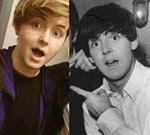
Paul McCartney has five children – and his role as a parent has evolved over the years. Right now, let’s focus on Beatrice Milly McCartney, his youngest daughter.
Lately, she has garnered quite a bit of attention, as many believe she bears an uncanny resemblance to her famous father. Comparing celebrities and their children with each other is quite inevitable. I mean, we constantly compare our own children to ourselves – or maybe they’re an exact copy of their uncle or grandparents. It’s quite human to try to find signs that connect us, it helps us feel a sense of belonging.
Looking at 20-year-old Beatrice Milly McCartney, there’s hardly any doubt about who her father is…
Paul McCartney, one of the co-founders of The Beatles, has an indisputable place in music history, and since he is arguably one of the most famous Britons of all time, his private life has also become widely known to the public. He married his first wife, Linda McCartney, in 1969, and together they had four children – Heather, Mary, Stella, and James McCartney. Sadly, Linda passed away in 1998. She died from breast cancer, at the age of 56.
Two years after Linda’s tragic pa details
